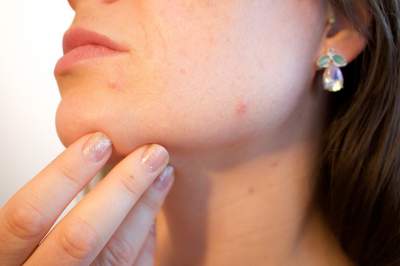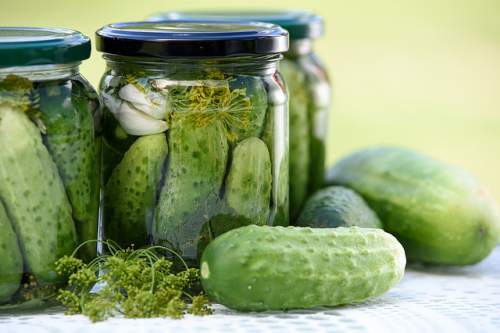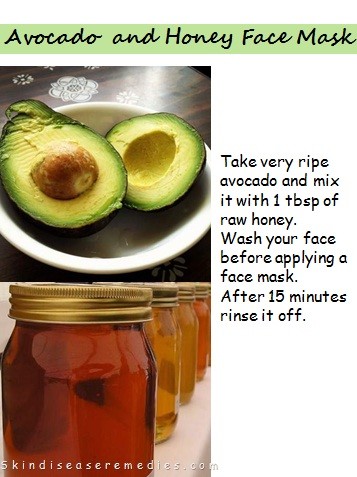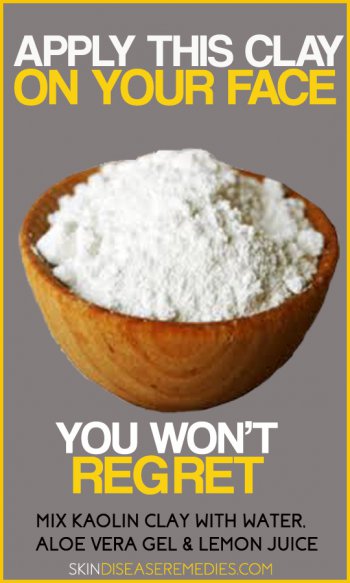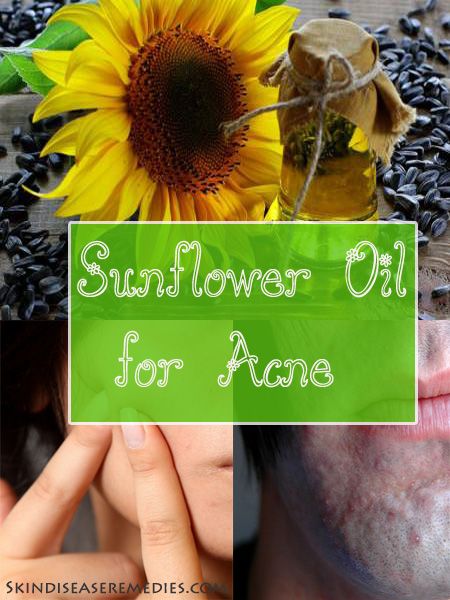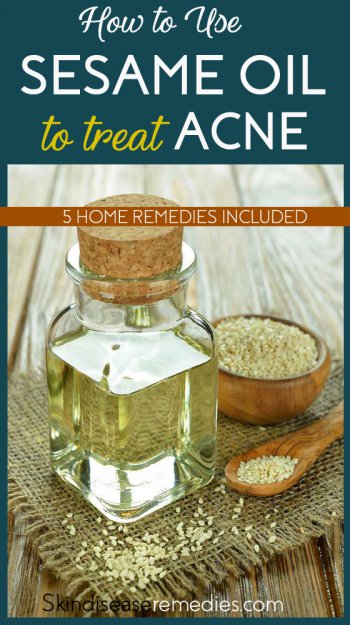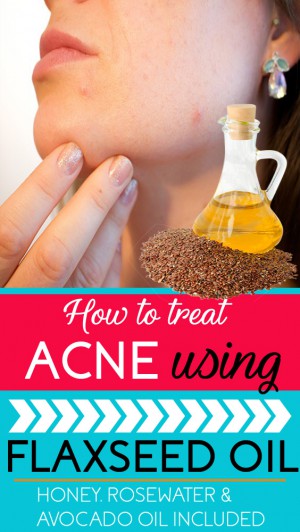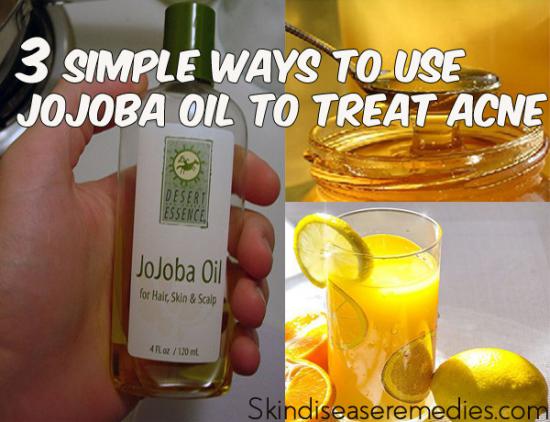
Nearly 50 million people are affected by acne every year in the US alone. No need to worry, you can treat this common skin ailment with natural remedies. In this article, you’ll learn about benefits of jojoba oil for acne.
The cosmetic industry is booming with this huge demand for anti-acne products, but they all are filled with chemical preservatives. In few cases, repeated use of these cosmetic products even triggered ailments.
So, what is jojoba oil?
Jojoba oil is a liquid wax extracted from the jojoba plant. Properties of this liquid wax are identical to skin’s natural oil sebum. This is why it’s included as an ingredient in many cosmetic products.
Jojoba oil is non-comedogenic in nature; Comedo is a type of a pimple or lesion caused due to excess oil or bacterial infection. A non-comedogenic cleanser controls excess sebum production but doesn’t strip natural oils from the skin.
Mix jojoba oil with vitamin C or aloe vera gel. Antibacterial properties of aloe help fight bacteria in pores and vitamin C boosts the immune system.
We recommend aloe vera and jojoba oil for acne scars, because of aloe’s gamut nutritional values.
The Cause
Unfortunately, the real cause of this skin disorder is not known. Experts say that hormonal imbalance that occurs when a person reaches puberty is the primary cause of acne inflammation.
Other studies state genetics, medication with androgen and cosmetic creams can trigger acne flare-ups.
- Hormonal imbalance, as you step into adulthood androgens and female hormones rears its ugly head in the form of acne.
- Stress triggers cortisol hormone to deal with stress. But, along with it small bit of hormones leak resulting in excess production of sebum.
- You’re surrounded by alarming levels of pollutants that form a layer on your face. Air pollution is going to make the things worse.
- One wrong product can cost you inflamed acne on your face. Check for ingredient’s list before topical application.
- Repeated cleansing will not treat acne, instead, it can dry out your skin. Experts say that this can promote acne lesions.
- The food you eat has a great impact on your health and skin. Those delicious oily products can actually be dangerous for your skin. It can cause break-outs. (source)
Whiteheads, nobules, cysts, blackheads, papules, and pustules are different types of acne pimples.
Is Jojoba Oil Good for Acne?
1. Anti-inflammatory property
Acne experts held inflammation to be the mere cause of break-outs. This property is essential to get rid of inflammation and redness. Even your anti-acne creams exhibit this ability.
Jojoba oil is housed with anti-inflammatory abilities that reduce pain, redness and helps to shrink swollen acne.
2. Prevents Excess Oil
Due to various factors your skin secrets excess sebum that blocks skin pores and this lead the way for acne.
The non-comedogenic ability of this liquid wax helps to unclog skin pores and tricks your skin to prevent it from releasing excess oil.
3. Fights Bacteria
P.acnes is the bacteria that is responsible for acne blemishes. The antibacterial ability of the oil helps to restrain infectious bacteria and reduce acne inflammation.
Topical application of this oil will also help to reduce redness and cleanse your skin.
4. Natural Moisturizer
Jojoba oil has similar properties to sebum, thus it can effectively hydrate your dry skin and protect it from harmful germs.
Apart from moisturizing this liquid wax can avoid sunburn, hyperpigmentation, unclog skin pores, itching, and other skin disorders.
5. Vitamin E for Acne Scars
This vitamin exhibits antioxidant ability that thwarts free radicals and reduces the appearance of acne scars.
It easily penetrates into the skin and promotes collagen production to make your skin free from wrinkles.
Other benefits of jojoba oil to treat acne are:
- Vitamin B helps to maintain hormonal balance for the healthy functioning of the skin.
- Its distinct feature helps to unclog blocked skin pores.
- Jojoba oil can be used as a cuticle moisturizing cream, just drop one drop of jojoba oil to fight dry cuticles.
- It’s a makeup removal, using a cotton ball dipped in jojoba oil to remove makeup.
- Apart from acne, jojoba oil can effectively treat other chronic skin ailments including eczema and psoriasis.
- If you’ve oily skin don’t worry you can use this oil, properties in jojoba oil control excess production of sebum.
- Antioxidant properties in jojoba oil help to fight free harmful radicals effecting the skin.
- It has an antibacterial agent which fight acne infecting bacteria, this will reduce acne flare-up.
A study carried out in Italy state that jojoba oil has the ability to fasten the healing process and stimulate collagen production.
Another study, regular application of jojoba oil face mask efficiently reduced acne and enhances the supple skin.
How to Use Jojoba Oil for Acne and Acne Scars?
Yes, it seems paradoxical that oil is used to treat acne which is caused by excess oil production. Because jojoba is not oil but a wax, this is similar to skin’s natural oil.
Jojoba oil when applied on skin with aloe gel forms a paradoxical effect controlling oil production and reduces bacterial infection. It tricks skin to produce less sebum.
#1 Jojoba Oil and Aloe Vera Gel
Its anti-bacterial ability restrains P.acnes bacteria. Jojoba oil also acts as a cleanser to unblock skin pores, reduce itching and inflammation.
Aloe vera is prominent for its cooling and soothing abilities. Topical application of this innate ingredient will reduce inflammation and fasten the healing process.
- Wash the affected part with cleanser.
- Pat dry and when the skin is still damp, using cotton ball apply jojoba oil + aloe gel (1 tbsp of jojoba oil and few drops of aloe vera gel). Don’t scrub.
- Repeat the process 3 times, as this is purging period you may see acne pores purging.
These ingredients absorb excess oil from the skin that clogs skin pores.
#2. Raw Honey, Jojoba Oil and Lemon Juice
Benefits of honey and lemon are renowned. Just by applying raw honey you can treat acne lesions. Anti-bacterial, anti-inflammatory and antioxidant abilities are housed in honey that works effectively to treat acne.
Lemon juice is also packed with antibacterial and bleaching properties that lighten the appearance of acne scars.
However, for effective remedy people prefer to blend all these ingredients.
Take 3 tablespoons of jojoba oil, 1 tablespoon of honey, few drops of lemon juice and mashed strawberries.
Wash your face with lukewarm water and pat dry with a soft cloth. Apply the obtained mask and allow it to dry naturally for 15-20 minutes. The, rinse it off with normal water.
Also, read this: Use raw honey to cure acne.
#3. Jojoba Oil, Frankincense Oil, and Carrot Seed Oil
This blend of all innate ingredients will not only treat acne blemishes but helps to obtain flawless skin.
Nutrients in these natural oils penetrate deep into the skin to stimulate healthy functioning.
Nutrients in frankincense oil can treat acne, eczema and reduce acne scars.
Take a ¼ ounce of jojoba oil, ¼ ounce of evening primrose oil, ¼ ounce of pomegranate oil, 15 drops of vitamin E oil, 10 drops of carrot seed oil and 20 drops of frankincense oil.
Mix all ingredients and apply it over the prewashed face.
#4. Tea Tree Oil and Jojoba Oil for Acne
Tea tree essential oil is renowned for its exceptional nutrients. This strong oil can treat chronic skin ailments and reduce stress.
If you’ve sensitive skin, then dilute tea tree oil with rosewater or jojoba oil to get rid of acne.
- Mix 1 tbsp of jojoba oil with ½ tbsp of tea tree oil.
- Apply the obtained mixture on acne lesions as a spot treatment.
- Use a cotton swab to apply the oil on red swollen bumps.
- Allow it to dry naturally.
#5. Jojoba Oil and Cornmeal
Obtained by grinding corn, this home available ingredient can remove excess sebum and shed dead cells. Check out, cornmeal face scrub recipe here.
- Mix 1 tbsp of cornmeal with 1 tbsp of jojoba oil in a bowl.
- Cleanse your face to remove impurities.
- Apply the obtained face mask to your acne affected skin.
- Leave it to dry naturally for 20 minutes.
#6. Almond Oil, Brown Sugar and Jojoba Oil
Brown sugar is known for its exfoliating abilities. It can remove excess oiliness from your face.
Vitamins and minerals packed in almond oil are essential to treat acne, improve your skin texture and for skin whitening.
- Take 1 tbsp of jojoba oil, 1 tbsp of almond oil and ½ cup of brown sugar in a bowl.
- Alternatively, you can mix required amount of honey and lemon juice.
- Mix thoroughly and apply it to your pre-washed
- After 20 minutes, rinse it off with water.
#7. Lemon Juice and Jojoba Oil for Acne Scars
As mentioned above, lemon juice is also packed with antibacterial and bleaching abilities that treat acne and lighten the appearance of scars.
To make the face mask more effective you can add honey and strawberry juice.
- Drop 1 teaspoon of lemon juice to 1 tablespoon of jojoba oil.
- Optionally, add 1 tbsp of raw honey and few mashed strawberries.
- Apply this homemade face mask on your acne affected skin.
- Let it dry for 15-20 minutes.
- Rinse it off with normal water.
Myths about Acne
You’ll find lots of myths surrounding this chronic skin ailment. Some of them are:
- Acne is for teenagers (myth) – even adult people can get affected by acne vulgaris.
- Acne and spots are different (myth) – they both are same. Acne is a medical term used by doctors.
- Acne is caused due to unclean skin (myth) (source)
How to Store Jojoba Oil?
You can store jojoba oil, it will not spoil. But if water droplets enter it may leave jojoba oil with black dots in it.
Use an airtight container and take away from the bathroom after use. Place it refrigerator for future use.
Important Tips
- You must change your diet to combat acne.
- Foods that trigger acne must be avoided.
- As mentioned above stress trigger acne vulgaris, so avoid it.
- Drink enough water and ingest water-rich foods to hydrate your skin from the inside.
- Cosmetic creams that are incorporated with chemical preservatives must be avoided.
- Avoid squeezing inflamed bumps; this will leave deep scars on your face.
- Regularly use any of the natural ingredients like cucumber, jojoba oil, almond oil or rosewater to treat acne.
Did you ever use jojoba oil for acne? Share your recipe in comments.

